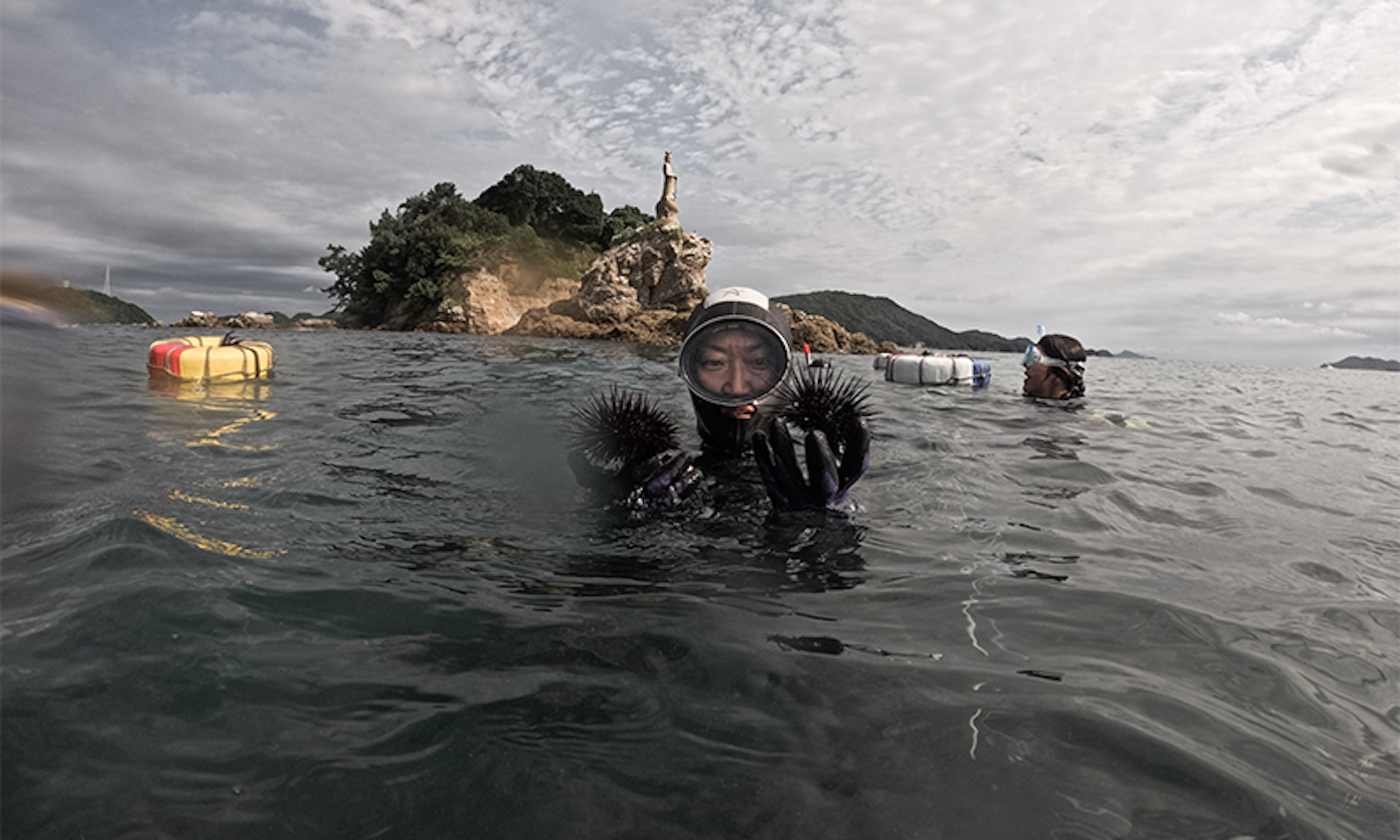On the last day of fishing season, Ayami Nakata starts her morning by lighting a small fire in her hut beside the harbor. The temperature outside hovers around freezing, and as Nakata warms, she changes into a wetsuit; gathers her facemask, chisel, and floating net bag; and walks to the docks with her husband, where they board his small fishing boat and motor a few hundred meters offshore. There she starts her shift.
For an hour and a half, Nakata takes minute-long plunges into the frigid water, free-diving 20 feet down to the rocky seabed and kelpy shore, and picking up any abalone, sea cucumbers, and turban shells she can find. The water is so biting that she can barely feel her fingers or pinch them together. She cups each catch in her hands and swims straight back up to drop it in her basket and breathe. “I have to be very mechanical,” says Nakata, waving her hands in a scoop-like shape. Still, despite the hardship, she says that diving calms her. To stay focused she sings her favorite songs in her head. “All the stress goes away,” says Nakata.
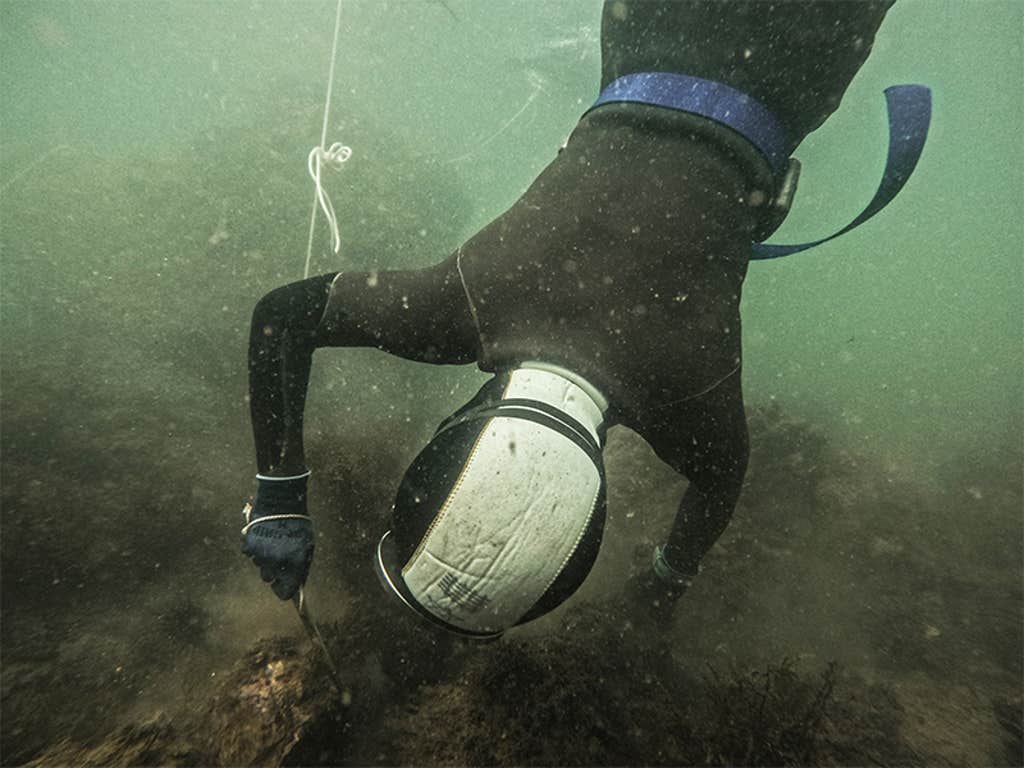
Nakata, who is 44 years old and a mother of five, is an ama diver: a freediving fisherwoman harvesting shellfish and seaweed according to an ancient Japanese technique. Although there are ama women scattered all over the nation, more than half of them reside in the Mie Prefecture, where Nakata’s home village of Osatsu is found and the traditions are most alive. She’s been diving for seven years, but her profession is slowly dying: Climate change has depleted the shellfish along Japan’s coasts, and younger generations have lost interest in the craft, abandoning coastal villages to pursue careers in big cities. Women like Nakata are left to question whether they’ll be the last to embody this way of life.
Ama, spelled 海女, means “women of the ocean.” Though male ama divers do exist, they are uncommon; ama diving has long been something women did independently while their husbands fished farther from shore. And since women’s bodies tend to have more fatty tissue than their male counterparts, they were thought to better withstand the cold.
Archaeological excavations in Toba, a city in Mie Prefecture, unearthed heaps of abalone shells and 3,000-year-old ama tools made from deer antlers, suggesting the discipline was already popular in early societies in the region. The oldest Japanese collection of poetry, the Man’yōshū, was compiled in the 750s and mentions ama divers, too. Since then, it appears the technique has changed very little.
Women like Nakata are left to question whether they’ll be the last to embody this way of life.
These days, diving is restricted to one- to two-hour sessions per morning according to fishery regulations set up to avoid overfishing. In this short time, the divers’ focus has to be razor-sharp so they can make the most of their lung capacity underwater. To breathe as deeply as they can, amas use a method called isobue—“sea whistle”—in which they slowly whistle air into their lungs in between dives, filling the wind with their calls. Before each diving day, some of the women gather and recite prayers for the day’s work in unison in their traditional amagoya huts: “I ask for plentiful abalone, sea snails, and sea urchins. I beg you. Please protect us from accidents, the sea, sharks, and other disasters.” On special occasions, they’ll visit local shrines and temples devoted to the sea’s gods and ask for protection. Divers know the sea can nourish many lives but also take them away in an instant.
“It’s the entire process of becoming one with nature,” says Kiku Kaito, an ama diver and the head of the ecotourism agency Kaito Yumin Club in Toba. “Ama divers love the sea.” She says they share a sense of duty since they are doing “something very difficult and risky,” so it creates a tight-knit community.
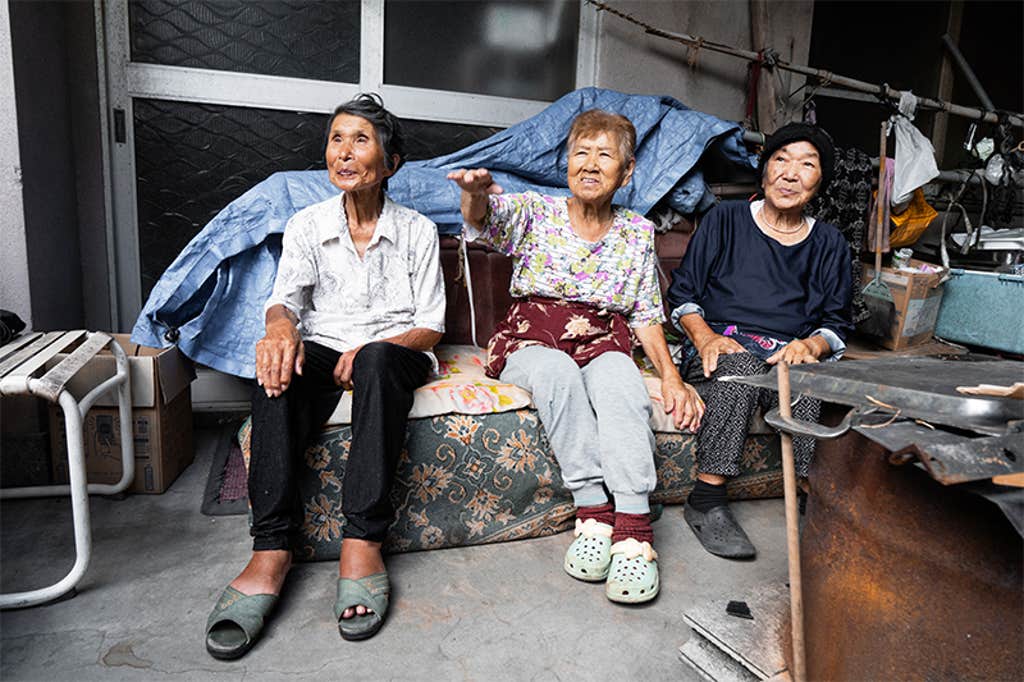
While ama rules have been updated to accommodate the use of thin rubber wetsuits and fins—making the job slightly more comfortable, as well as less daunting to newcomers—these changes are relatively recent. Ancient woodblock prints portray early ama diving with open eyes, naked breasts, and flowing skirts; following World War II, the ama started sporting a circular facemask and exchanged skirts for sheer white bodysuits and bandanas. This now-iconic white outfit was thought to represent the Shinto sun goddess and help keep sharks away. Because these white overalls don’t absorb as much heat as a black outfit would, they are also thought to prevent fisherwomen from spending too long underwater and overharvesting the seabeds on which they depend.
That recurring commitment to sustainability reflects amas’ centuries-old respect for the ocean’s bounty. The prefectural government sets strict rules for maximum catch sizes, tools, and equipment allowed, as well as diving times and seasons: fall and winter for sea cucumber and turban, spring for wakame, and summer for abalone.
Whereas contemporary commercial fisheries involve large, fine nets that are dragged across the ocean floor, damaging habitat and indiscriminately catching whatever is present, ama divers harvest surgically, in small quantities. There is no bycatch and minimal habitat disturbance. “By doing it manually, by hand, you only catch what you want to catch,” says Gildas Hardel, a former tourism coordinator at the Toba Chamber of Commerce who now works as a local ama village tourist guide. Because the women can’t dive below 65 feet, they target only a fraction of their quarries’ habitat.
Still, the three abalone species caught by ama divers—Haliotis madaka, H. gigantea, and H. discus discus—are among those officially listed as endangered by the International Union for the Conservation of Nature. Local regulations say abalone can only be picked from the ocean bed when they’ve reached adulthood and can only be collected for about 30 to 40 days each year.
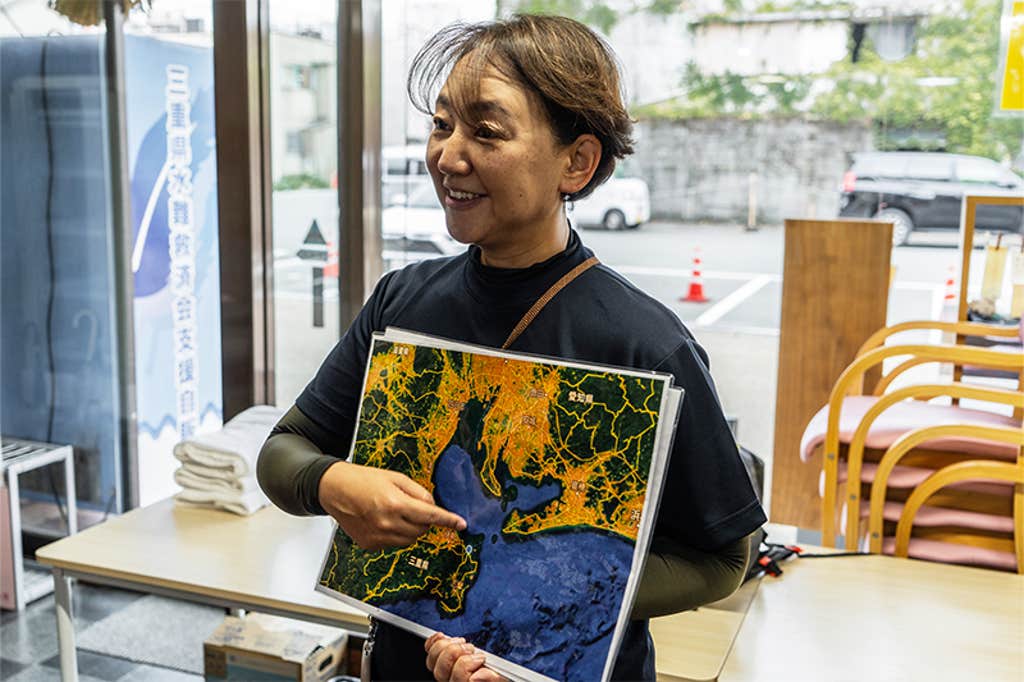
While all harvesting puts pressure on abalone populations, ama diving tends to apply less than intensive commercial enterprises or diving with scuba tanks, says Yukio Matsumoto, an abalone ecology expert at Tokyo University of Marine Science and Technology. “We are trying to understand if we can catch the abalone sustainably,” says Matsumoto. “It is a difficult question.” Even in protected areas where all harvesting was banned for more than a decade, he says, abalone populations haven’t rebounded.
Tomohiko Kawamura, a marine ecologist at the University of Tokyo, says that if hundreds of new divers flocked to ama, even their sustainable methods could cause great damage to regional abalone populations—but it’s unlikely that ama diving will become that popular again. The labor is increasingly difficult and unprofitable.
Every day, members of the local fishing council—elderly divers and fishers with decades of experience, and current ama divers—gather to decide whether the day will be a diving day. If it is, the catch is sold to the local fisheries authority, who pay according to rates set daily depending on local changes in demand and supply.
Although one morning of plucking sea cucumbers can yield as much as ¥100,000 JPY ($800 USD), a diver’s annual catch typically yields a few million yen—less than $30,000 and not enough anymore for a dependable livelihood. As a result, diving is rarely a full-time job. Nakata, for example, runs a grocery store in the village and makes jewelry on the side to support her family. She dove just 30 days this year. Kaito, who now only dives a couple of times a year and runs the tourism agency full-time instead, says ama diving has changed in purpose: Once a profession, it’s now a lifestyle.
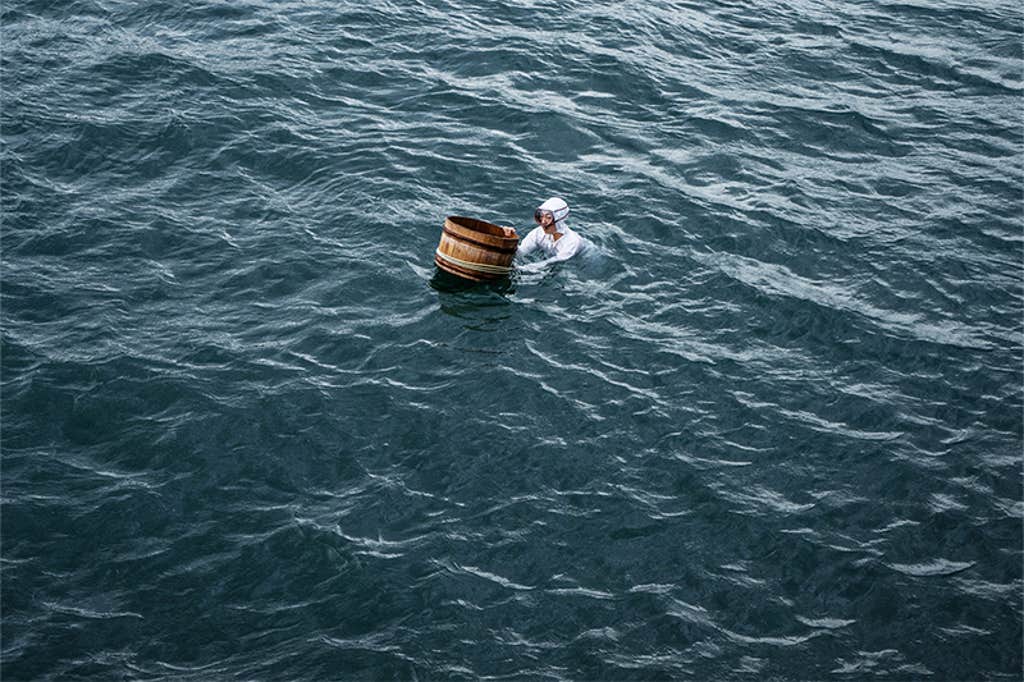
Shrinking harvests—especially for abalone—add to the hardships of an already difficult job. More senior divers, some older than 90, remember accidentally stepping onto abalone wherever they dove and easily catching them in shallow waters. Now they dive 50 feet to find the same shells.
This is likely because Japanese coastal waters have experienced something locals call isoyake, or seaweed denudation: The seaweed and seagrass beds that serve as habitat, spawning territory, and food sources for much of the local marine life are being rapidly lost. “It is very serious, but not simple or easy” to explain, says Kae Numa from the fishery division of Shima City, in the Mie Prefecture.
Most amas blame the seabed erosion on climate change and the heating of currents around the archipelago nation; divers say the waters have felt warmer on their skin as the years have passed. Academic research puts further blame on intensive grazing by invasive sea urchins, pollution from chemicals and sediment runoff, land reclamation, and aggressive overharvesting by commercial fishers.
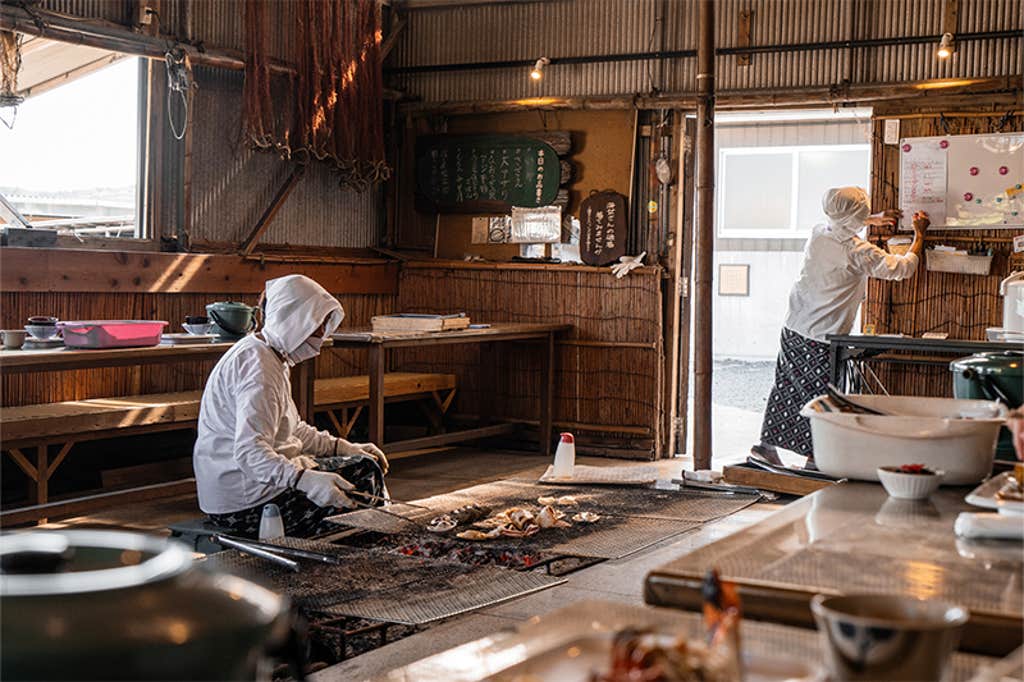
“The catch is less and less,” says Kaito. “The temperature changed, the current changed, we are so angry—so angry.” She supports government efforts to prevent isoyake and believes the divers can somehow “fight with the elements” to counteract the current conditions, too. For more than a decade, Mie Prefecture institutions have raised kelp, sea urchin, and juvenile abalone in hatcheries for release into the wild. Restoring populations will take many years, though, leaving divers stranded in the meantime.
The number of women willing to be ama divers is also plummeting. While as many as 10,000 divers plied their craft in the years immediately after World War II, fewer than 1,200 are active today. The average age is over 60. Many divers carry on for as long as their bodies allow, but few younger women are interested in continuing the legacy. Their elders are brokenhearted at the thought that a millennia-old tradition could disappear.
In 2015, Toba City launched a one-off campaign to recruit ama diver apprentices and help them relocate from other Japanese cities into ama communities. Only two women signed up, and one eventually left. Some divers hope tourism will be a lifeline: The Toba Sea-Folk Museum is campaigning for ama diving to receive official recognition by UNESCO as an intangible cultural heritage, and divers have invested in opening their huts to the public to provide authentic ama experiences and a meal. Others have started selling some of their catch—as well as ama-themed crafts—online, where they can reach a wider market.
For the divers, keeping the ama spirit alive is what matters. “I want to experiment and try everything possible to carry on,” says Nakata. Two of her older children, who are 12 and 14, have shown some interest in someday becoming ama divers, but they’re not yet too enthusiastic about waking early and diving into cold waters, Nakata says. She thinks that as long as they learn to appreciate the joy of the craft—even if they’ll never be able to make it a full-time profession—that will preserve at least a piece of the culture.
“Some kind of victory,” says Nakata. ![]()
Lead image: Aiko Ohno displays the sea urchins she gathered in a plunge. She is one of two apprentices hired by the local government to learn ama diving techniques, and moved from bustling Tokyo to tranquil Toba to continue the craft. Credit: Edges of Earth / Adam Moore.















